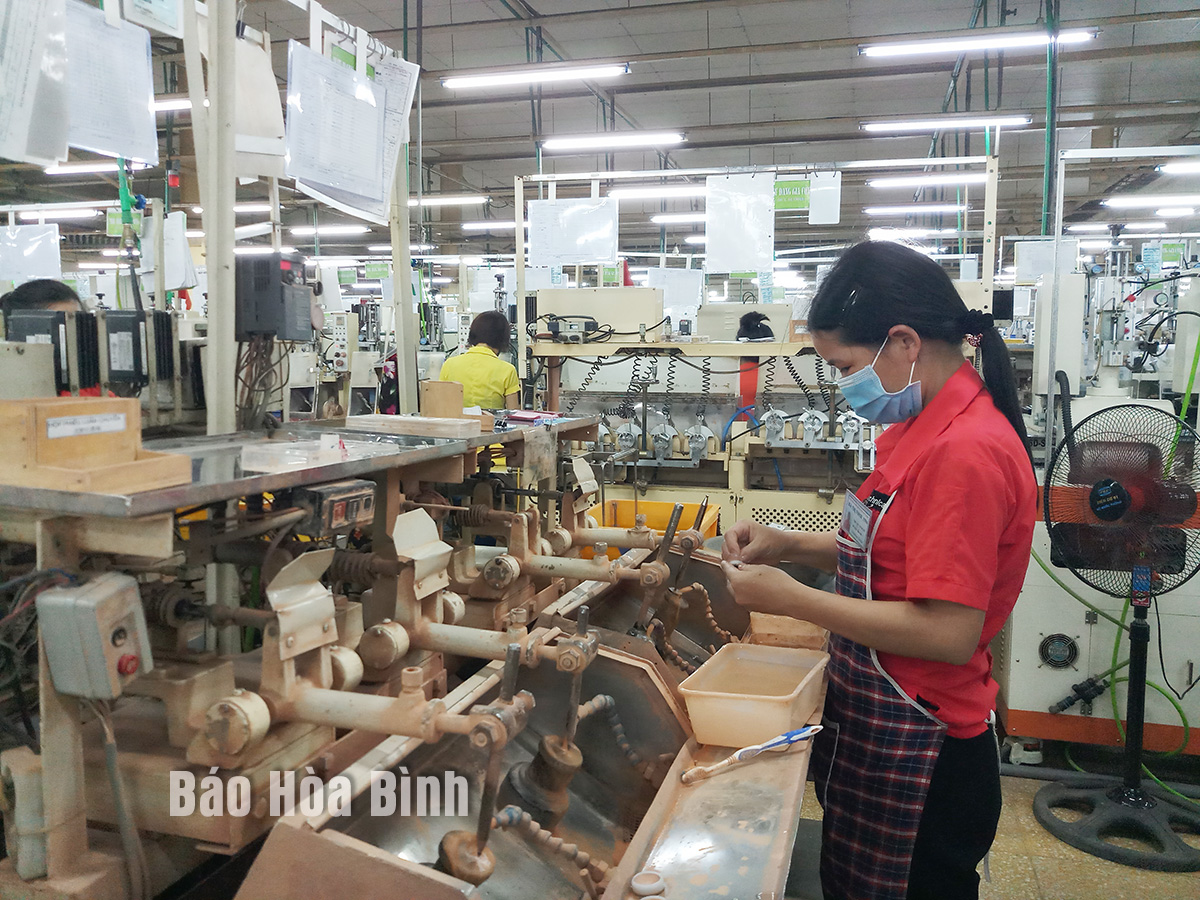
Once seen as an industrial "zero" at the time of its re-establishment in 1991 and the following years, Hoa Binh province has undergone a remarkable transformation, emerging as a dynamic industrial hub in Vietnam's Northwest gateway region.
Bo Trai (Left Bank) Da River Industrial Park has attracted investments from foreign-invested firms, contributing to enhancing the local industrial production value.
Over the years, the local administration has seen developing its industrial base as a driver for high and sustainable economic growth, helping stabilise the society, improve local livelihoods while contributing to delivering on the province’s socio-economic targets.
Accordingly, Hoa Binh has channeled focus on modernising its industry and preserving traditional crafts, with a strong emphasis on export-oriented production that delivers high economic value. Industry is also positioned as an important motive for the locality’s industrialisation and modernisation journey.
Hoa Binh’s efforts have delivered tangible results. Its industrial production has reached an annual growth rate of 9% during the 2021-2025 period. Nearly 5,680 hectares have been allocated for industrial development across various industrial parks and clusters, far exceeding targets set by the 17th provincial Party Congress. The industrial - construction sectors now comprise 45% of the provincial economic structure by 2025. Industrial parks and clusters have shown consistently improving occupancy rates year over year while numerous traditional craft villages have received official recognition.
For industry to play a leading role in the local economic development, the province has rolled out harmonious measures regarding planning, business climate improvement, capital mobilisation, human resources, and investment promotion. At the same time, infrastructure development, mineral resource management, and environmental protection have been paid due attention, creating momentum for the industry – handicraft sectors thrive sustainably.
Since 2021, Hoa Binh has accelerated industrial restructuring by concentrating on spearhead areas that leverage the province's resource advantages such as building materials, agro-fishery processing, electronics, textiles, mechanical assembly, beverages, and pharmaceuticals.
It has encouraged industries to evolve from simple processing towards direct export manufacturing. Rural industrial production establishments have received support to invest in advanced technology and build technical demonstration models to improve labour productivity, product quality, and competitiveness amidst strong economic integration in the new situation.
At the same time, the province has promoted the development of local craft villages through the One Commune One Product (OCOP) programme. Currently, the province boasts 42 industrial cooperatives, 11 recognised traditional craft villages, 40 certified outstanding rural industrial products, and 118 provincial OCOP products rated three stars or higher.
The positive outcomes in industry and handicraft have significantly contributed to the province’s economic growth and State revenue, reshaping its labour and economic structure. Manufacturing sectors such as electronic components, agro-forestry processing, food and beverages, machinery, construction materials, textiles, and electrical equipment are emerging as development drivers.
According to data from the Hoa Binh Provincial Party Committee, the industrial production index for the first six months of 2025 is estimated to have increased by 20% compared to the same period last year. This marks the highest year-on-year growth rate for this period since 2020.
In the first six months of 2025, Hoa Binh province’s export turnover was estimated at 1.145 billion USD, marking an 18.11% increase compared to the same period in 2024. Import turnover was estimated at $ 804 million, a 17.15% increase, which helped the province maintain a positive trade balance.
The lives of the ethnic minority farmers in Tan Lac district have gradually improved thanks to the new directions in agricultural production. This is a testament to the collective strength fostered through the professional associations and groups implemented by various levels of the district’s Farmers’ Union.
With the motto the "product quality comes first,” after nearly one year of establishment and operation, Muong village’s Clean Food Agricultural and Commercial Cooperative, located in Cau Hamlet, Hung Son Commune (Kim Boi district), has launched reputable, high-quality agricultural products to the market that are well-received by consumers. The products such as Muong village’s pork sausage, salt-cured chicken, and salt-cured pork hocks have gradually carved out a place in the market and they are on the path to obtaining the OCOP certification.
In the past, the phrase "bumper harvest, rock-bottom prices" was a familiar refrain for Vietnamese farmers engaged in fragmented, small-scale agriculture. But today, a new spirit is emerging across rural areas of Hoa Binh province - one of collaboration, organisation, and collective economic models that provide a stable foundation for production.
Maintaining growing area codes and packing facility codes in accordance with regulations is a mandatory requirement for agricultural products to be eligible for export. Recently, the Department of Agriculture and Environment of Hoa Binh province has intensified technical supervision of designated farming areas and packing facilities to safeguard the "green passport" that enables its products to access international markets.



